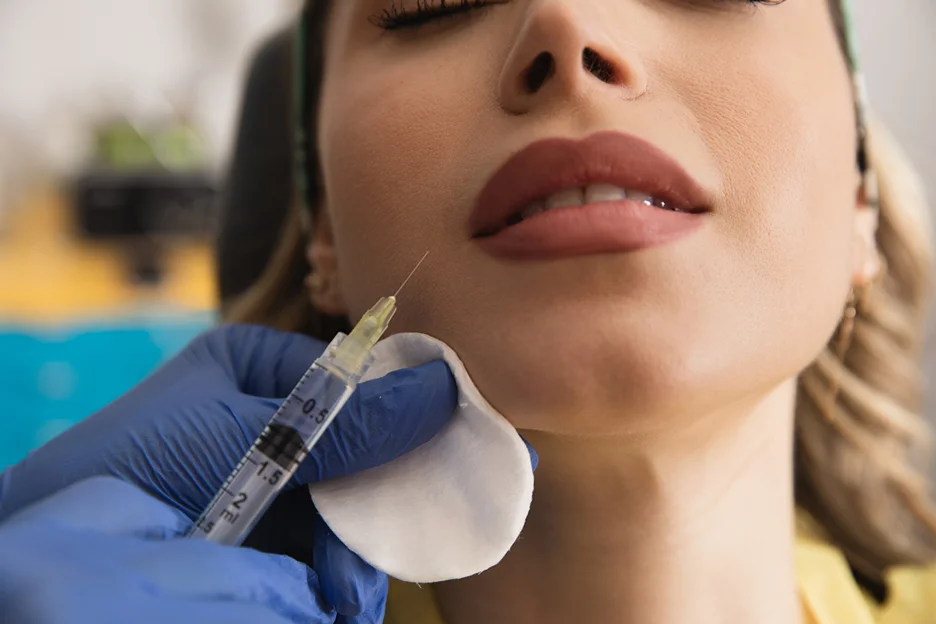Find out if long-lasting lip enhancement is right for you.
Permanent lip fillers like fat transfers, PMMA injections, silicone implants, and lip lift surgery can durably augment lips. But these permanent options have more risks like infection and need for removal compared to temporary fillers.
What Are Permanent Lip Fillers?

Permanent lip fillers are procedures that augment the lips for the long haul. They aim to improve the shape, symmetry, and volume of lips for a plump, pretty pout. The effects are meant to last permanently without needing to repeat treatment (unlike temporary fillers).
There are a few different types of permanent lip fillers to choose from. The most popular options include:
- Fat transfer – Uses fat from another part of your body to plump up the lips. The transferred fat becomes a permanent part of the lips.
- PMMA (polymethylmethacrylate) – PMMA microspheres encourage lasting collagen production for semi-permanent enhancement.
- Silicone implants – Solid silicone implants permanently augment the lips.
- Lip lift surgery – Reshapes the lips for a fuller appearance by surgically altering the position.
The Permanent vs Temporary Debate
Many people opt for temporary fillers like Juvederm or Restylane to test drive plumper lips. These hyaluronic acid fillers offer temporary augmentation for 6-12 months.
The upsides are that temporary fillers:
- Don’t require surgery or downtime
- Allow you to preview potential results before committing
- Eventually dissolve if you don’t like the changes
Meanwhile, permanent options like PMMA and implants aim to:
- Provide lifelong enhancement
- Eliminate the need for repeat injections over time
- Potentially improve lip shape and symmetry beyond just volume
However, permanent lip fillers also have some downsides:
- The results cannot be reversed or dissolved
- There are risks like infection, implant shifting, or granuloma formation
- Surgical excision may be required if complications occur
Comparison of Permanent vs Temporary Lip Fillers
| Permanent | Temporary | |
| Duration of results | Years to permanent | 6-12 months |
| Reversibility | Not reversible | Dissolves over time |
| Procedures | Fat transfer, implants, surgery | Injections |
| Risks | Higher risks like infection, shifting | Lower risks overall |
| Natural look | Can look overfilled | Subtle, soft enhancement |
| Cost | Higher overall | Lower per treatment |
As you can see, there are pros and cons to both temporary and permanent routes. It’s about weighing longevity against safety. More on this soon!
Understanding the Technology

The world of lip fillers has seen remarkable innovation and new technologies lately. Let’s look at some of the cutting-edge advancements:
Filler Materials
Hyaluronic acid fillers like Juvederm and Restylane have been upgraded to improve longevity, natural feel, and ease of injection. Products like Belotero and Restylane Kysse are designed to balance softness and structure.
The newest HA fillers integrate lidocaine to reduce injection pain. They are also more cohesive to yield smooth, even results.
Injection Techniques
Specialized techniques allow injectors to meticulously place filler for seamless enhancement. These include:
- Micro-droplet injections – Use tiny amounts of filler placed precisely for subtle augmentation
- Serial puncture technique – Multiple controlled injections along the lip line
- Fanning technique – Filler is fanned out across the lip in small aliquots
These innovative methods maximize nuanced control over shaping and volume. Patients appreciate the soft, natural-looking outcomes.
Focus on Natural Results
There is now more emphasis on complementing natural beauty rather than overfilling the lips. The goal is enhancing what you have, not replacing it.
Patients want lip fillers to harmonize with their other facial features. Moderate volume boosts are popular. Understated enhancements also mean less negative attention and stigma.
As techniques and materials have improved, natural lip filling results are easier to accomplish.
Are Permanent Fillers Right for You? Key Tips
Permanent lip fillers allow you to attain the lips of your dreams for good. But are they right for you? Here are some factors to consider:
Pick a Reputable Injector
Who performs your procedure matters – a lot! Always choose an experienced board-certified provider like a plastic surgeon or dermatologist. Avoid “injection parties” or med spas with questionable credentials.
Have a Thorough Consultation
During your appointment, your injector should evaluate your lip anatomy and structure. They’ll assess your skin quality, elasticity, and current volume. Realistic goals suited to your unique anatomy can then be set.
Select the Best Filler Option
Your injector will recommend the right filler and injection technique for beautiful, natural-looking results. The choice depends on factors like your desired enhancement, budget, and risk tolerance.
Understand the Risk Profile
While rare, permanent fillers do pose risks like infection and implant displacement. Lip lift surgery involves surgical risks as well. Discuss concerns with your provider so you can weigh the benefits vs potential complications.
Prepare for the Procedure
Leading up to your treatment, avoid blood thinners for 1-2 weeks to minimize bruising and swelling. Stay well hydrated before and after the procedure. Having cold compresses on hand can also help reduce swelling.
Be Diligent With Aftercare
Closely follow your provider’s post-procedure instructions. Use lip balm and avoid direct sun exposure. Follow up at regular intervals. Proper aftercare helps ensure your results look and feel fantastic.
The Takeaway

Permanent lip fillers allow you to achieve a flawless pout for the long term.
With smart treatment selection and an expert injector, you can realize beautiful, natural-looking results. Weigh the pros and cons, do your research, and discuss goals thoroughly with a provider. Take time to consider if permanent fillers are the right choice for your needs and anatomy.
With some knowledge and planning, you’ll be on your way to perfect, plump lips for good.


